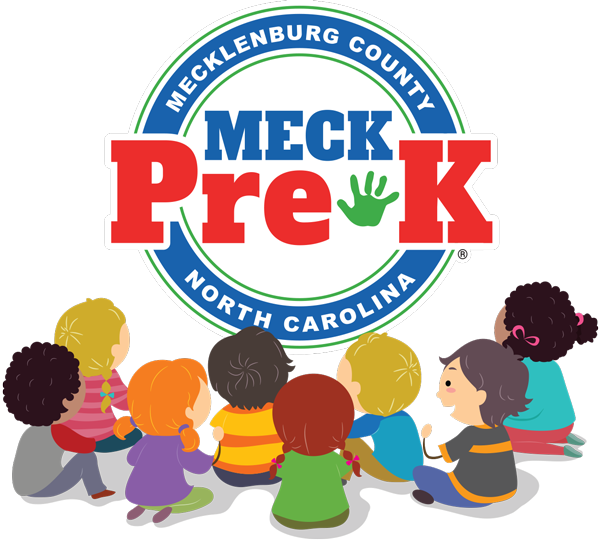Have you ever wondered when and how a child’s self-confidence begins to form? You may be fascinated to know that by age 5, children have a sense of self-esteem comparable in strength to that of adults.
Research on Confidence in Pre-K
The positive interactions and experiences that children experience in a high-quality pre-K environment can help build their belief in themselves and their abilities.
A group of University of Washington researchers created a self-esteem measurement for preschoolers to measure how strongly children felt positively about themselves. They found that self-esteem is not only unexpectedly strong in children this young, but is also systematically related to other fundamental parts of children’s personality. “Our findings underscore the importance of the first five years as a foundation for life,” one of the researchers said.
A strong sense of self-esteem and confidence at an early age can lead to other positive outcomes. In a study led by an MIT economist, researchers found that children who attended preschool had fewer behavioral issues later on, including fewer suspensions, less absenteeism, and fewer legal-system problems. They were also more likely to graduate from high school, take the SAT, and attend college.
It’s not just research that tells us that preschool and pre-K instills confidence in children. Parents and caregivers see it in their children. One MECK Pre-K parent told us, “Francesca is much more confident now. She can thrive in a classroom environment with her other classmates and teachers.” Another caregiver said of her child that “Pre-K has helped her with her self-esteem and given her a positive outlook on life. She is just glowing all over because she’s growing to be a better little person.”
How to Build Confidence in Pre-K Students
Children who experience many positive interactions with caregivers and peers are more likely to develop high levels of self-esteem and confidence. Here are some tips for helping children in these areas.
- Praise children for trying. If a child tries something but isn’t successful the first time, that’s ok! Recognize their effort and encourage them to keep trying. Children learn through experience, and by taking on new challenges. Focusing on the effort will help foster a growth mindset rather than a fear of failure.
- Highlight positive behaviors. You can help a child recognize positive interactions by pointing them out in everyday life. For example, if you just bought groceries, you might say, “That lady who helped us find the cookies was so helpful. It’s a good thing we asked her for help, and now we know where to find the cookies next time!” Or after a visit to the playground, you might say, “I really liked how you helped that boy climb up the slide. Once you helped him, he figured out how to do it himself!”
- Be present without doing. Sure, we want to help our children do things, but being present while they try something on their own can help build confidence. It’s ok to give children opportunities to take appropriate risks. For example, you might notice that their tower of cardboard blocks is getting too high and is ready to topple over. Let them keep stacking and they will soon learn how high they can go. Or they might find a better way of stacking to go even higher.
- Let them make choices. When possible, let children make their own choices, and say “no” to things they do not want to do. Obviously, if they say “no” to wearing a seatbelt, that is not negotiable! But if they want to wear sneakers instead of sandals, or they want try painting instead of coloring, it’s good to let them make choices. This helps them build confidence in their own decisions.
- Consider their temperaments. Not every child is going to feel comfortable jumping right into new situations or experiences. Some children may need more time to observe and feel comfortable. Pushing them when they aren’t ready could make them less likely to try new things. Try to be encouraging without being pushy. And when in doubt, talk to their teachers or another caregiver for ideas on how to encourage them.
- Look for high-quality pre-K. If you are enrolling your child in pre-K, make sure it is a high-quality program with highly qualified educators in the classroom. Also make sure they follow a curriculum that creates positive experiences for learning and the development of confidence and self-esteem.
About MECK Pre-K
MECK Pre-K uses The Creative Curriculum®, which builds children’s confidence, creativity, and critical thinking skills through hands-on, project-based investigations. Teachers promote discovery and inquiry with opportunities for children to think critically and develop skills with hands-on investigations of relevant and interesting topics in the classroom. Teachers also work with parents to reinforce classroom learning with family-friendly activities designed for home.
MECK Pre-K is high quality pre-K education open to all four-year-old children in Mecklenburg County. Classrooms are located in licensed childcare centers and taught by licensed teachers and highly qualified assistant teachers. You can apply online at MeckPreK.org. If you have a child who is not old enough for pre-K this year, you can sign up for our email list and be notified when they’re eligible for MECK Pre-K. Simply go to MECKPrek.org/future-meck-pre-k-students and select your child’s age group.

